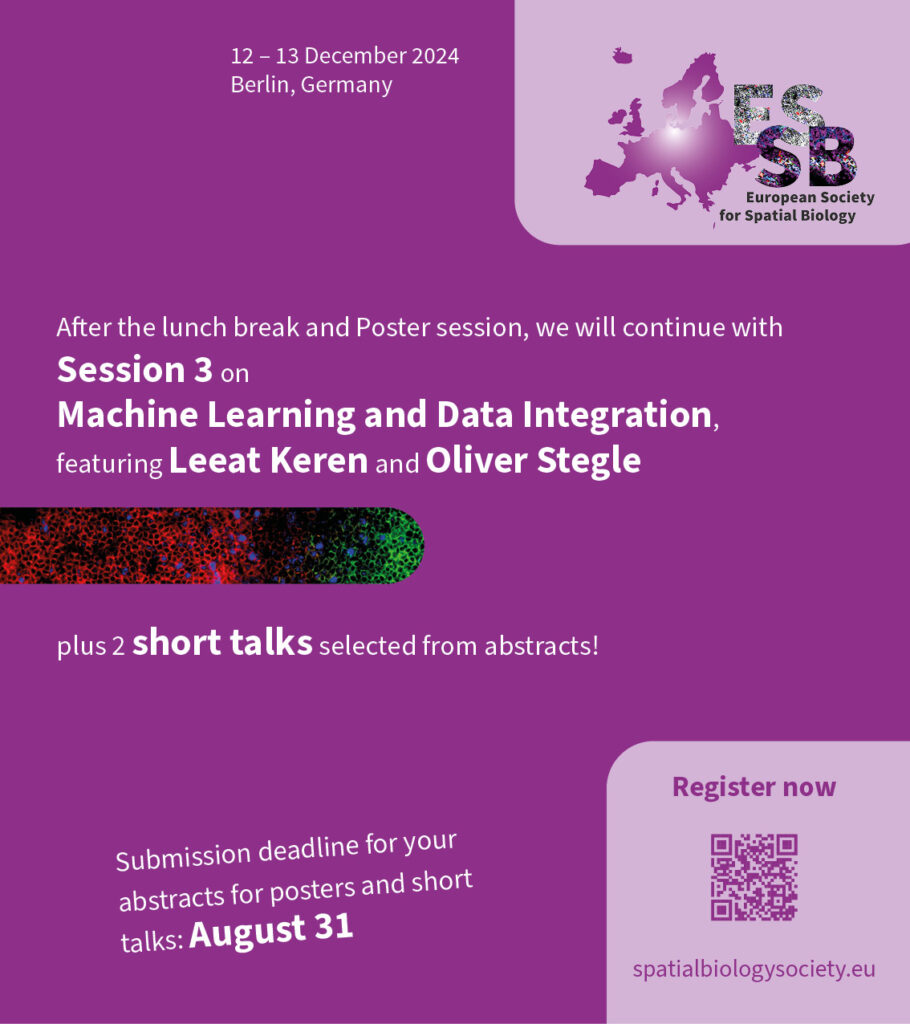The 3rd session of the ESSB conference will be dedicated to spatial multi-omics, featuring Leeat Keren and Oliver Stegle as speakers. Again, there will also be presentations of selected abstracts!

The 3rd session of the ESSB conference will be dedicated to spatial multi-omics, featuring Leeat Keren and Oliver Stegle as speakers. Again, there will also be presentations of selected abstracts!
